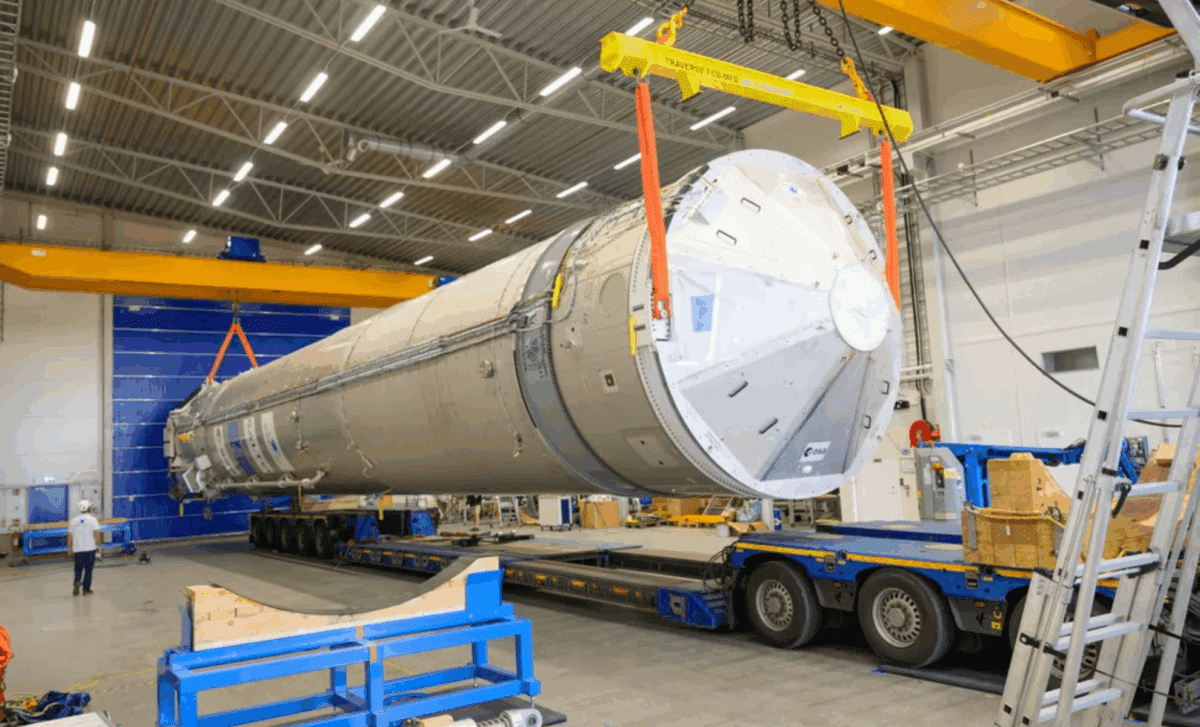Europe is quietly preparing for a leap into the era of reusable rockets, a move that could reshape its future in the space industry. The initiative, led by ArianeGroup with the support of the European Space Agency (ESA), marks the continent’s most ambitious step toward autonomous access to orbit. At the heart of the plan stands a prototype now waiting on the frozen grounds of Sweden — the Themis T1H demonstrator. What happens next could determine Europe’s standing in the new space race.
A New Chapter In Europe’s Space Ambition
As detailed by space.com, the European aerospace sector is accelerating its efforts to match the reusable launch capabilities pioneered by SpaceX. The first testbed, Themis, has already reached the Esrange Spaceport in Kiruna, Sweden, signaling the start of a crucial test campaign.
“Callisto, Themis and Skyhopper are different demonstration programs contributing to the development of a European reusable launch vehicle,” explained Franck Koebel of ArianeGroup during his presentation at the International Astronautical Congress in Sydney.
The 98-foot-tall demonstrator is equipped with landing legs and designed to perform vertical landings after low-altitude flights — a technological milestone once dominated by American private players. Behind the initiative lies SALTO (Reusable Strategic Space Launcher Technology and Operations), a program within Horizon Europe, aimed at nurturing Europe’s independent spaceflight capabilities. A successful test of the Themis T1H would pave the way for the Callisto and Skyhopper projects, introducing progressively complex systems like multi-engine configurations and foldable landing legs. Each iteration brings Europe closer to mastering full-stage recovery technology — a skill once deemed unattainable outside the US.
The European Challenge: Mastering The Technology
For Europe, the pursuit of rocket reusability is not just about matching global competitors — it’s about redefining its space sovereignty. As Koebel highlighted,
“The challenge is not particularly the science or the physics behind it, but rather: How in Europe are we able to master the needed technologies?” His words capture the tension between ambition and practicality.
While the physics of landing a booster is well understood, replicating the reliability and cost-efficiency of companies like SpaceX requires years of iterative testing and consistent funding.
ESA’s roadmap foresees a full-stage recovery demonstration between 2027 and 2028, with operational readiness expected in the early 2030s. Achieving that target will depend heavily on Europe’s ability to sustain financial and political support. Unlike commercial players, Europe’s space efforts are a consortium-driven enterprise, often slowed by budget negotiations among member states. Yet, with Themis on the launch pad and ESA fully backing its development, Europe seems ready to take a decisive step toward reclaiming a share of the rapidly evolving launch market.
A Future Written In Reusability
If successful, ArianeGroup’s reusable rocket initiative could redefine the economics of European launches. Reusability drastically reduces costs, shortens turnaround times, and opens the door to more sustainable access to orbit — all critical for competing in a global market increasingly dominated by private ventures. By the early 2030s, the continent could see its own Ariane successor taking off, landing, and flying again from European soil.
The Themis program is more than a technical experiment; it is a declaration that Europe refuses to be left behind. The next few years of flight tests in Sweden will not just determine the viability of reusable European rockets — they will test the continent’s resolve to innovate, adapt, and lead in a rapidly changing space landscape.

